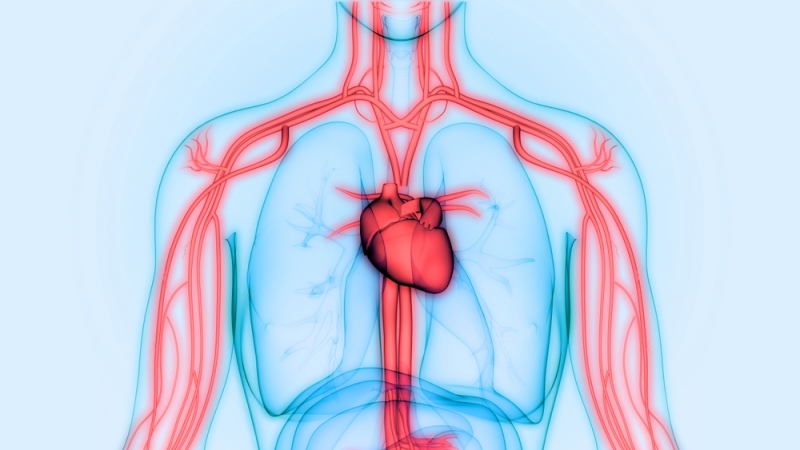Arteriovenous malformation, or AVM, arises during the period of prenatal development. The cornerstone of the pathology is abnormal connection between the arteries and veins. Under normal conditions, arteries start from the right part of the heart, gradually turn into the smaller capillaries and after that – into veins. In AVM capillaries are absent, and arteries turn directly into veins.
Surgical treatment of AVM in Germany
Arteriovenous malformation, or AVM, arises during the period of prenatal development. The cornerstone of the pathology is abnormal connection between the arteries and veins. Under normal conditions, arteries start from the right part of the heart, gradually turn into the smaller capillaries and after that – into veins. In AVM capillaries are absent, and arteries turn directly into veins.
Such irregular anatomical structure hampers physiological metabolic processes in the tissues, particularly in the nervous ones. Moreover, vessels of the malformation often rupture and cause life-threatening bleedings. Direct reconstruction of the pathological vessels is the only effective option of reducing the health risks.

Making the diagnosis and planning therapy
Most often, AVMs develop in the nervous tissue, i.e. in the spinal cord or the brain. Small malformations may accompany a person throughout his life, do not causing any symptoms. On the other hand, large malformations in the functionally significant brain regions cause a number of complaints, including:
- Seizures that do not respond to anticonvulsants intake.
- Weakness of muscles up to the one-sided paralysis.
- Sensitive disorders, like tingling or numbness.
- Memory and concentration deficit, difficulty speaking.
- Loss of coordination, balance disturbances.
After investigating complaints and performing physical examination, doctor will proceed to more informative visualizing studies. The final diagnosis is made on the basis of instrumental examination, as only it gives precise information about the brain vessels state. Primary procedures include:
- Computed tomography (CT).
- Magnetic resonance imaging (MRI).
- Cerebral arteriography.
Choosing the surgical intervention
Treatment of AVM is aimed at removing pathological blood vessels and restoring normal blood circulation along with causing minimal damage to the surrounding tissues. The aspect of safety is of special importance in case of brain AVMs, as removing even the tiny volume of cerebral tissue may lead to the severe neurological deficit.
Patients with malformations in the brain can consider the following medical options:
- Conventional surgery is mainly performed in the urgent situations, including the life-threatening bleedings from the ruptured vessels. Other indication is treatment of small superficial malformations. The conventional intervention includes the skull opening with direct operating on the affected brain and vascular structures.
- Endovascular interventions are coiling with platinum coils and embolization. Endovascular procedures do not require skull opening or brain tissue cutting. The intervention is performed via the blood vessels. AVM is blocked by the embolus that stops blood circulation through the affected vessels (this is called embolization) or its volume is reduced by placement of platinum coils (this is called coiling).
- Radiosurgical interventions combine minimal invasiveness with high precision. Radiosurgery is destroying AVM with targeted radiation beams. Energy of the beams destroys the abnormal blood vessels and prevents the intraoperative hemorrhage. This method is used in patients with small AVMs that are located in the hard-to-reach cerebral regions.
Estimating benefits of receiving treatment abroad
When a patient wants to receive medical treatment that will lead to the best result, he makes choice among the leading specialized healthcare institutions worldwide. Treatment in the countries with state-of-art medical equipment and trained doctors targets all the risks of AVM presence:
- Hemorrhage.
- Hampered oxygen and nutrients supply of the nervous tissue.
- Compressing the nervous tissue.
These lead to eradication or alleviation of symptoms and improving the overall health prognosis. Other benefits of undergoing the surgery in the TOP European hospital include:
- Using minimally invasive techniques that leads to shorter hospital stay, absence of scars and minimal postoperative pain.
- Low risk of postoperative complications, including the bleeding, neurological deficit, and infection.
- Low risk of the disease relapse.
- Individual postoperative rehabilitation with maximal functional restoration.
- High level of comfort during hospital stay.
When choosing the exact clinic or university hospital, one should consider number of performed diagnostic and therapeutic procedures per year, qualifications of the healthcare professionals, availability of the necessary equipment, etc. According to the world’s statistics, Germany annually takes the leading position in the list of the countries with the most effective healthcare systems.
Arrangement of treatment abroad with Booking Health
As it was mentioned before, the first stage of planning therapy in the foreign country is investigating the data. Finding the reliable information is not always easy, as one can run across a lot of advertising websites, etc. Reviews of other people are also helpful but can be subjective, as every medical case is individual.
The most reliable way of undergoing treatment of arteriovenous malformation in Germany, is using assistance of Booking Health. The company Booking Health has been involved in arranging treatment of foreign patients for over 15 years. It is an internationally certified medical tourism provider with the certificate ISO 9001:2015. Specialists will guide you through the whole process of treatment:
- Assist in hospital and neurosurgeon selection.
- Tell about the most effective and innovative treatment options, prepare the preliminary diagnostic and treatment plan.
- Take care about the treatment invitation and book the appointment date.
- Control the medical program implementation.
- Control the costs for medical services; exclude extra fees for the non-citizens (saving up to 50%).
- Check the final calculation and return unspent funds.
- Arrange additional medical procedures and neurological rehabilitation.
- Book accommodation, plane tickets, and transfer.
- Provide you with medical interpreter, who will accompany you during communication with the healthcare professionals.


